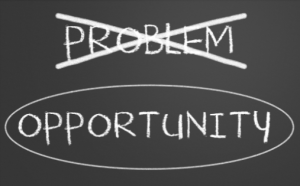You have likely heard many arguments about the value that diversity can bring to a workplace. Over the past several decades, businesses have invested meaningfully in implementing Diversity, Equity, and Inclusion (DE&I) programs that focus on diversity in their organizations. In fact, almost 98% of U.S. companies had some sort of DE&I program as of 2019.
However, if you ask those “diverse hires” about their company’s DE&I programs, only about a quarter of that diverse talent feels tangible benefits from those programs. Moreover, research suggests that most DE&I programs that focus on diversity do not meaningfully increase diversity in the long-term.
Why is that? Why do so many DE&I programs fall short or outright fail in achieving their stated objectives?
In pondering this question, I found myself recalling a dinner conversation with a group of software engineer friends a few years ago.
The night was brimming with good food and laughter, until I – the only non-engineer at the table – joked about my regret in moving away from my undergrad major (which was related to computer science) and therefore from a lucrative career path. One of them responded enthusiastically, “It’s not too late! You’ve learned coding, and it’s gonna be a lot easier for you to get hired by (his tech giant employer) – you know, “woman” check, “Asian” check.”
I quickly lost my appetite.
I don’t blame my friend. What he said was neither malicious nor, unfortunately, false. But his comment made me realize some of the ways organizations’ diversity-focused DE&I programs have fallen short. These programs can, unintentionally, reinforce some of the very biases and prejudices they are designed to reduce. These programs can deepen silos and divisions rather than build bridges and foster greater understanding. And these programs can fail in enabling organizations to tap into the real potential of diversity in the workplace.
This incident, and the years of research that followed, also revealed to me the root of these DE&I program pitfalls – leaders and organizations of these failed programs engaged in their DE&I initiatives with either a flawed mindset or a flawed approach.
The Flawed Mindset: DE&I as A Problem to Be Solved
Modern DE&I in the United States originated as a response to the civil rights movement in 1960s. Following the enactment of several laws on the local, state, and federal levels to protect the rights of historically marginalized groups, organizations began to invest in diversity programs to ensure compliance and to reduce or prevent discrimination lawsuits.
In the decades that followed, civil rights movements have advanced and societal expectations have shifted. However, the motivation for organizations to engage in DE&I work has not evolved with the times. Many businesses remain primarily motivated by public pressure or legal risk when it comes to their DE&I work. As a result, many leaders and organizations still regard DE&I as a problem to be solved, rather than an advantage to be gained.
This mindset rooted in preventing legal liability has tangible consequences on the success of DE&I initiatives. Behavioral science experiments have revealed that when behaviors are driven purely by extrinsic motives, such as legal compliance, that behavior will not last long nor produce the best results. Moreover, when leaders and organizations seem reluctant about or not fully committed to their DE&I efforts, employees and other stakeholders recognize and react to that reluctance. A seeming hesitancy or lack of commitment to DE&I can discourage employees from taking any of their organization’s DE&I efforts seriously.
At its core, DE&I work seeks to create a change in employees, specifically a change in employee behavior. An individual’s behavior is influenced by how the goal of the behavior change is framed or worded. Research has found that when we want to provoke a change in behavior, presenting the goal of that behavior change in a positive frame (i.e., If you do X, you will gain something positive and/or will avoid suffering some negative harm) is more effective than when presented in a negative frame (i.e., If you don’t do X, you will fail to attain a possible gain and/or will possibly suffer some negative harm).
In the case of DE&I work, narratives that center the goal of DE&I work within negative frames, (e.g., If we don’t engage in DE&I work, we could face litigation, criticism, and reputational harm) can be ineffective when it comes to engaging employees in DE&I. Moreover, DE&I work narratives couched in negative frames can actually produce resistance, resentment, and/or blame among stakeholders.
In many ways what has been lacking in the flawed mindset around organizational DE&I is a narrative with a positive frame about why DE&I efforts are worth engaging in at all.
The Remedy: DE&I as an Opportunity to Build Competitive Advantage
What is a narrative about organizational DE&I with a positive frame that fosters a more effective mindset?
The answer: Engaging in DE&I work is an opportunity to build competitive advantage for your organization.
Over the past two decades, numerous studies have illustrated the ways DE&I can create a competitive advantage for organizations. For example, organizations that achieve diverse and inclusive workplaces have been found to have stronger:
- Financial returns,
- Employee engagement,
- Talent acquisition and retention, and
- Brand differentiation.
 When DE&I is recognized as an opportunity to build competitive advantage, it becomes much easier to get buy-in across the organization. Moreover, when DE&I is understood within a competitive advantage mindset, it naturally changes how organizations approach DE&I work – moving away from passively preventing legal liability to engaging in the work of achieving the meaningful benefits of DE&I.
When DE&I is recognized as an opportunity to build competitive advantage, it becomes much easier to get buy-in across the organization. Moreover, when DE&I is understood within a competitive advantage mindset, it naturally changes how organizations approach DE&I work – moving away from passively preventing legal liability to engaging in the work of achieving the meaningful benefits of DE&I.
Therefore, shifting from a mindset of DE&I as a problem to be solved to a mindset of DE&I as an opportunity to build competitive advantage is the necessary first step to create and execute effective DE&I initiatives.
However, mindset alone is not enough for DE&I initiatives to succeed.
The Flawed Approach: Hire for Diversity and Manage for Assimilation
Another major pitfall for DE&I programs that focus on diversity happens when these programs are designed to achieve primarily numerical workforce goals. When organizations set goals such as “hiring x% of underrepresented groups,” DE&I work ends at the surface level – increased representation and a workforce that looks more diverse.
However, as those organizational hiring targets are met, these new employees’ daily experience in the workplace has just begun.
In the absence of a culture where everyone feels encouraged to speak up and show up authentically as they are, and when managers are not trained in the skills to navigate diverse workforces, employees will be pressured to assimilate to the higher-status or dominant group – in most cases, white, straight, able-bodied, cisgender male.
And the cost of assimilation in the workplace is high.
Assimilation corrodes one’s psychological safety and contributes to employee strain and burnout. As a result, employees who feel pressured to assimilate exhibit lower engagement, lower productivity, and are more likely to leave the company. Additionally, at the organizational level, assimilation naturally leads teams to group think, depriving the organization of the real value that a diversity of thought could bring – innovative ideas, solutions, and strategies that can advance the organization.
Beyond the cost of assimilation, numerical workforce goals that are designed to benefit historically marginalized groups can also end up causing more harm than good. If people have reason to believe that someone was hired or promoted because of some aspect of their identity, people tend to assume that the person must not have been hired or promoted because of their competence. Think back to my dinner table conversation – “woman” check, “Asian” check. This dynamic erodes trust, negatively impacts employee relationships, and could end up becoming a vicious self-fulfilling prophecy.
However, there is a different approach to DE&I that more reliably leads to true diversity in the workplace. And the key to this approach is to not focus on diversity.
The Remedy: Aim to Create an Inclusive Culture
 Diversity can never realize its potential in a vacuum. When we talk about the ways diversity can enhance employee engagement, innovation, and problem-solving, we often leave out the foundation necessary to realize those benefits of diversity. And that is an inclusive culture – a culture that attracts and retains diverse talent, where everyone feels valued, like they belong, and set up for success.
Diversity can never realize its potential in a vacuum. When we talk about the ways diversity can enhance employee engagement, innovation, and problem-solving, we often leave out the foundation necessary to realize those benefits of diversity. And that is an inclusive culture – a culture that attracts and retains diverse talent, where everyone feels valued, like they belong, and set up for success.
Without this important foundation, establishing diversity in the workplace can create more harm than good. Simply bringing people of different identities to the table often creates more tension and conflict. However, within an inclusive culture, differences and tension can become opportunities to encourage learning, foster understanding, and strengthen team dynamics. Moreover, an inclusive culture enables organizations to realize the benefits of diversity, and thereby build competitive advantage.
Therefore, the starting place of any DE&I work should be creating an inclusive culture. And that means shifting the focus away from achieving numerical workforce targets to doing the work of eliminating barriers for historically marginalized groups and creating an inclusive environment at work.
With the right mindset and the right approach, organizations can create far more effective DE&I initiatives.

